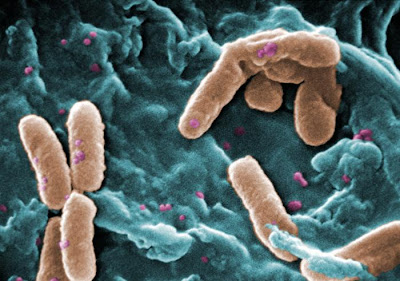Bacterial Evolution in Action?
One of the most confusing (and annoying) problems in discussing origins is the misuse of terminology. The word "evolution" itself has several different definitions. Use a word, and people often have a definition in mind — which may not be appropriate for the discussion at hand. Some people will disingenuously equivocate the proper definition for the moment into "molecules to man" evolution.
Another confusing problem is that Darwin's Cheerleaders will point to variations and say, "See? Evolution in action!" Variations in a microbe such as Pseudomonas aeruginosa are often used to extrapolate small changes as "proof" of Darwin's general theory of evolution. That is the opposite of the truth; no new genetic information is added.
 |
| CDC.gov/Janice Haney Carr |
Rapidly “evolving” bacteria are in the news. A mutation toggling the bacteria Pseudomonas aeruginosa between two distinct forms is generating excitement among evolutionary biologists. Joao Xavier of Memorial Sloan-Kettering Cancer Center and colleagues report in Cell Reports that they have repeatedly observedPseudomonas evolve into “hyperswarmers.”Later, we read:
You can read the entire article in context by visiting "Selective Switch Toggles Bacterial Traits while 'bacteria evolve with predictable results'".One of the greatest Achilles heels in evolutionary dogma is the fact that the wondrous production of life from lifelessness and the rise from molecules to man supposedly occurred while shrouded unobserved by the mists of millions of years. Evolutionary biologist Stephen Jay Gould once argued that man was an accidental product of countless unpredictable evolutionary accidents. Carl Zimmer of theNew York Times now reports that evolution need not be so slow or so random.Pseudomonas aeruginosa, like many microbes, can exist quite nicely in our environment and even on our skin without causing us any harm. But Pseudomonascan also be a dangerous pathogen, causing, for instance, dangerous infections of immune-compromised patients, burn victims, and patients with cystic fibrosis.